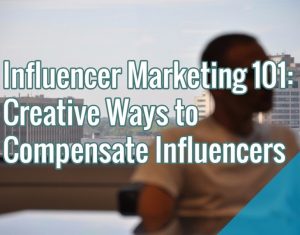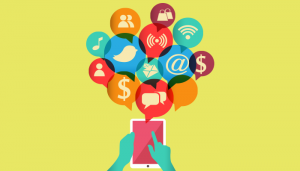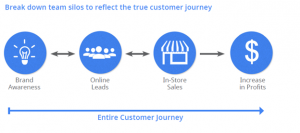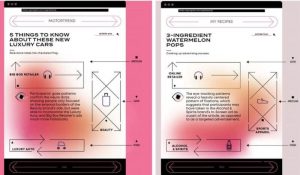
Even if you’re a social media whiz, LinkedIn can defy understanding. After all, it’s not like other social networks. Although it’s now got a lot more “social” in its features, and has recently refreshed parts of its interface so it looks more like other social sites, under the hood it remains a network focused primarily on business. If you’re used to sharing photos of cute animals and animated GIFs which work well on Facebook and Instagram, you might not get the expected response if you do the same on LinkedIn.
So what exactly can a company do on LinkedIn? What kind of content can a business post there? And who’s even on the network? Let’s improve our understanding of LinkedIn by checking out key stats about the business network.
LinkedIn by the Numbers
As we said, LinkedIn is a professional networking site, available in more than 200 countries and territories and in 24 languages.

It has more than 467 million members worldwide, with 133 million of those in the US. More than ¾ of LinkedIn users are outside the US. Other large concentrations of members are in:
- India (39 million)
- Brazil (27 million)
- China (26 million)
- UK (21 million)
However, don’t get hung up on those figures: with 2 new members joining LinkedIn every second, there’s a good chance there are already many more. LinkedIn’s fastest growing demographic consists of college students and recent graduates, of whom there were more than 40 million when figures were last reported.
Some 58% of LinkedIn users access the site via the mobile app (or should that be apps?). In addition to the main app, LinkedIn has mobile apps for the many services it has acquired and integrated including (Job Search, Lookup, Learning, Slideshare, Groups and Pulse). Together those tools add up to multiple ways for professionals and businesses to connect with both their existing network and potential customers. As you’d expect from a professional network, most people access LinkedIn during their working week, with peak times being between 12 and 3 PM.
LinkedIn: The B2B Magnet?2
One question a lot of people have about LinkedIn is whether it’s only for B2B. The answer is: “yes and no”. It’s true that the research shows clearly that LinkedIn skews more towards being a B2B networking and marketing platform. According to Hootsuite, half of B2B buyers use that platform to help them make buying decisions.

However, there are also plenty of examples of creative B2C use, such as the Virgin Atlantic, Fruit of the Loom and 20th Century Fox examples cited by Convince and Convert. After all, since the people representing their customers on LinkedIn are also consumers themselves, it can be a good way to reach them. LinkedIn suggests that consumers on LinkedIn have more buying power and are likely to be more loyal brand advocates than those on other platforms.
Using Linkedin Company Pages
A key site for B2B LinkedIn interactions is the company page. The Hootsuite research cited above shows that 57% of companies have one. The key to a great company page, many agree, is to fill it out completely and take advantage of every feature LinkedIn offers. That includes uploading a compelling header image and updating your company feed regularly. Check out LinkedIn’s company page resources for more help with this.

Of course, in order to use some of the features, you’ll need to set up your personal profile. When you interact with your page (or other LinkedIn features, like groups), people who want to check you out will go back to your profile. Don’t just upload a photo and write a summary and leave it at that. Include recommendations, endorsements, publications, certifications and more.
Encourage everyone in your company to do the same, and make sure they list your company as their workplace, which will make it easier for their extended networks to connect with your company. A killer tip from LinkedIn is that happy employees are your biggest advocates and they are more likely to share your company updates, getting your message to a wider audience.
What Kind Of Content Works On Linkedin?
When it comes to B2B content marketing, LinkedIn is definitely a winner (though still second to Facebook), with benefits-driven content ruling the roost. The Hoosuite study cited earlier shows that 94% of B2B marketers use it to distribute business-related content and 70% of people see LinkedIn as a trusted source of business information.
LinkedIn’s own best practices guidelines shares the following information about audiences on the platform:
- 60% are interested in industry insights.
- 53% want to hear company news.
- 43% want to learn about new products and services.
That clearly signals that sharing your expertise in the form of insights into your field will help you do well on LinkedIn. If you also add company updates, then you will have made a good start in using LinkedIn effectively. The good news is that status updates don’t have to be long; they just have to provide value.
A good starting point for creating an industry report is to send out a survey with the questions you want people to answer. Leave some room for unscripted answers, too. Once you have that data, you can analyze it and draw some conclusions, and by the time you get to your second year, you have a basis for comparison. These reports and conclusions get shared everywhere. A good example of this is the Content Marketing Institute’s B2B Content Marketing report.
Of course, if you’re pressed for time, you can also give your perspective on research other people have published, as the Buffer example below shows. At the time of writing, that post had been shared 3,800 times on LinkedIn, according to Buzzsumo.

Buffer rounds up some other interesting stats to guide your LinkedIn content marketing strategy:
- LinkedIn drives more than 4 times as much direct referral traffic to your website as Twitter and Facebook.
- The best posting times are during the workday and workweek; forget about evenings and weekends.
- The most effective LinkedIn marketers post up to 4 times a day.
- One update will generally reach 20% of your followers.
- Post 20 or more updates monthly, and you’ll reach 60% of your netowrk.
- LinkedIn provides analytics for company pages; as well as stats for other content (like blog posts authored on the platform). Use this data to tweak your strategy.
The stats above show that with LinkedIn marketing, consistency is key.
Tips For LinkedIn Marketing
What else can you do on LinkedIn? You can blog. What used to be LinkedIn’s influencer publishing platform is now open to everyone, giving you another way to share insights with your network. Just go to your profile and click “write an article” in the status window to get started. Best practices for these articles are similar to those for any type of blogging, including:
- Add a killer image which draws the eye to your content.
- If you’re sharing insights, include charts.
- Make sure your content is readable, relevant, interesting and scannable.
- Add a call to action pointing to other articles or your website.
- Pay attention to the stats LinkedIn provides on how people interact with your content to know if you’re doing it right.
GrooveHQ found that blogging on LinkedIn improved trust, social mentions and conversions, as well as expanding their network.
Using LinkedIn Groups for Marketing
LinkedIn Groups are another feature companies can use effectively. Sometimes it pays to start your own (especially if you already have a highly engaged audience). As Social Media Examiner points out, to do this, you’ll need to:
- Write a great description.
- Invite your existing connections.
- Ask your colleagues to join and share the group.
- Tell your customers and wider network through an email marketing campaign.
- Advertise.
The most effective groups I’ve seen also get a couple of company insiders to create and post discussion starters at least once or twice a week. After a while, as membership grows, the members will take the lead on generating content and discussion within the group. Groups are another great place to share industry insights and to learn what your audience most wants to know about.

If that seems like too much hassle, then simply use LinkedIn’s search features to find groups compatible with your niche (or where the people you most want to reach are hanging out), join and participate. Again, make sure your personal profile looks great before you join a group.
Finally, if you decide to create and share industry insights, you can give them more reach by using LinkedIn Sponsored Content or LinkedIn Sponsored InMail. Many of the people who are using LInkedIn best do this, including Adobe, Duke University, Hubspot and more. They have all found that these options provide increased brand awareness, engagement and reach.
So really, the questions isn’t what the hell do we do with LinkedIn, but why aren’t we using LinkedIn yet? Where do you plan to start with LinkedIn marketing?
* Adapted lead image: Public Domain, pixabay.com via getstencil.com
“What The Hell Do We Do With LinkedIn?!” (Final Answer)
The post “What The Hell Do We Do With LinkedIn?!” (Final Answer) appeared first on Search Engine People Blog.
(69)







